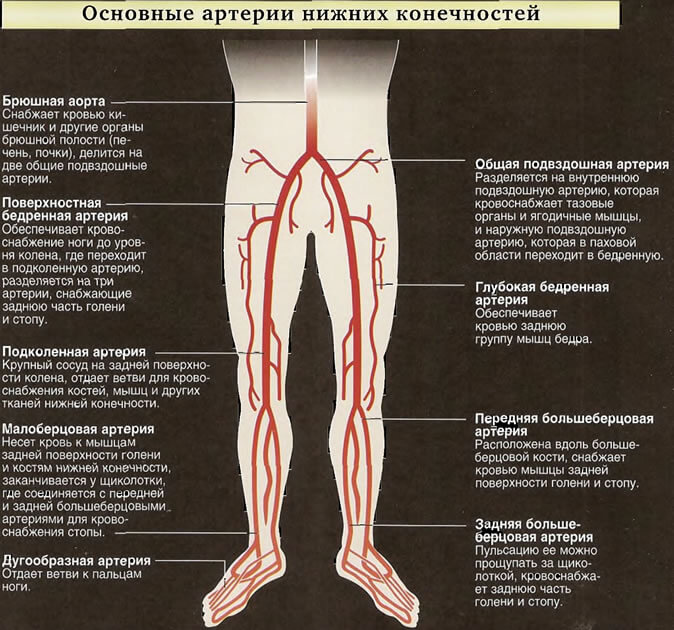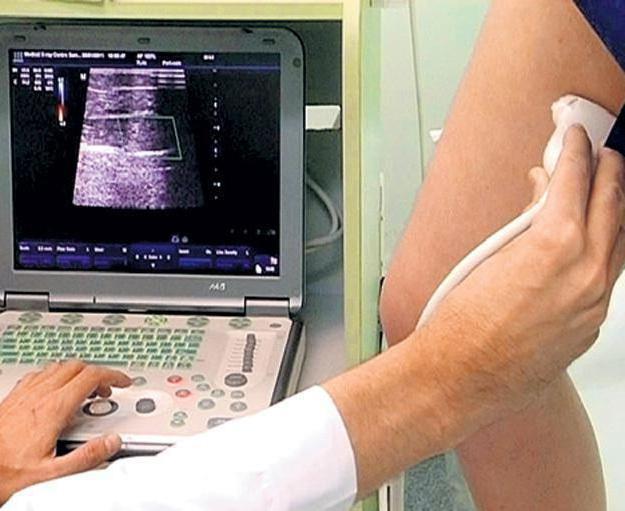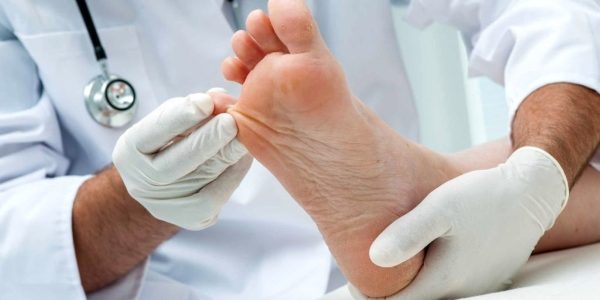Vasculitis of the lower extremities
Author Ольга Кияница
2018-11-07
Vasculitis is a general term for all diseases that are accompanied by inflammation of the blood vessels. A pathological condition causes a deterioration in the nutrition of a part of the body, because of which it weakens and may increase in size or decrease over time.Sometimes the vessel narrows to such an extent that it completely overlaps and blocks.
Vasculitis is acute, short-term, chronic, or long-term. Sometimes organs can also be affected, especially if they do not receive enough nutrients and oxygen-rich blood. This leads to their damage, and sometimes to the death of a person.
The clinical picture of vasculitis can be different, depending on the size of the affected area, part of the body and the severity of the condition. Angiography or biopsy is usually needed to confirm vasculitis. Treatment is used to reduce inflammation and restore the proper functioning of the affected area of the body.
Video: What is vasculitis, diagnosis and treatment of vasculitis
Vasculitis description
The medical term vasculitis is derived from lat. vasculum is a vessel; -itis is a suffix that means “inflammation.” Also known is the second name of the disease “angiitis”, which is anciently -gr. ἀγγεῖον - vessel
Vascular lesions can affect various parts of the body, including often
vasculitis of the lower limbs develops. Similar pathology is most common in Buerger’s disease.
Vasculitis may be primary, developing independently with signs of inflammation characteristic of the disease, and secondary, when the signs of vasculitis occur against the background of another disease.

Primary vasculitis are:
- Takayasu disease.
- Giant cell arteritis.
- Allergic vasculitis.
- Nodular periarteritis.
- Microscopic polyangiitis.
- Wegener's granulomatosis.
- Hemorrhagic vasculitis.
- Cryoglobulinemic vasculitis.
- Churga-Shtrauss syndrome.
- Kawasaki syndrome.
The size of the affected vessels is significantly different and mainly depends on the form of vasculitis. Both large arteries (1 cm in diameter and more) and microscopic ones like venules, arterioles and capillaries can be inflamed. Different forms of vasculitis also differ in types of inflammation. Such nuances cause a distinctive clinical picture and the lack of similarity of individual systemic vasculitis.
Secondary vasculitis
Most often develop as a separate element of another disease. In such cases, it is often considered an optional disorder or complication of the underlying pathology. Most often, vasculitis is combined with infectious diseases such as scarlet fever, sepsis, typhus, etc.
Symptoms of vasculitis of the lower extremities
Signs of vasculitis in the legs can vary significantly from one person to another, due to the age and tolerance of the patient and the severity of the disease.
Common symptoms, defined in all vasculitis:
- Fatigue.
- Malaise.
- Weakness.
- Weight loss.
- Ulcers and rashes on the legs.
- Skin discoloration.
- Pain in the muscles of the legs.
- Confused breathing.
When vasculitis of the lower limbs most often appear ulcers and rashes on the legs, as in the photo below.

Specific signs of individual forms of vasculitis, in which lower limbs may be affected:
- Behcet's disease - the veins and arteries of various parts of the body, including the lower limbs, are involved in the pathological process. Purulent ulcers appear on the skin, eyes become inflamed, and the genitals may also be affected.
- Burger's disease - in the vessels of the upper and lower extremities blood clots are formed, which cause the appearance of pain and the formation of ulcers. In severe cases, inflammation affects the brain and heart.
- Hemorrhagic vasculitis is characterized by the appearance of rashes on the lower limbs, buttocks. There is also pain in the joints and abdomen. The disease is more often diagnosed in children, although it can be determined in adults.
- Allergic vasculitis - with this pathology on the skin of the lower extremities rash appears in the form of red spots.Often this condition is associated with allergies to drugs or the development of any infection.
Causes of lower limb vasculitis
Most often, the cause remains unknown. But sometimes the development of the disease can be associated with a recent or ongoing infection, especially caused by a virus. Also, vasculitis occurs on the background of an allergic reaction to certain medications.
Vasculitis may develop after treatment for an infectious disease. This is due to the fact that the infection contributes to the emergence of non-standard immune response in humans. As a result, favorable conditions arise for the adhesion of blood cells and the formation of clots in blood vessels, which leads to vasculitis.
In the presence of weak immunity, vasculitis may occur on the lower limbs and in other parts of the body. In severe cases, organs (lungs, heart, kidneys) are affected. As a rule, when vasculitis develops in the blood vessels of the legs, they become inflamed and become thicker or, conversely, thinner. The blood flow is reduced and less nutrients and oxygen are supplied to the legs. Because of this, a person has difficulty moving. The long course of the disease leads to thrombosis and other complications.
Video: Causes of Vasculitis
Severity of lower limb vasculitis
The disease can have a serious, even life-threatening, course. Initially, there is mild discomfort in the legs and difficulty in walking, running, changing position, etc. In acute cases, the affected areas of the blood vessels in the legs weaken and eventually stretch / stick out, which leads to aneurysm. When a blood vessel narrows and inflames, blood supply to this area can be completely or partially blocked. If adjacent blood vessels also cannot compensate for the lack of blood supply, the tissue of the affected area gradually dies. In such cases, the leg can become completely immobile, and sometimes gangrene develops.
Sometimes the blood vessel wall becomes so weak that it breaks and begins to bleed. This can cause the patient to die, but this termination of the disease is relatively rare.
Diagnosis of lower limb vasculitis
Laboratory studies of various biological body fluids or human blood with suspected vasculitis are used first. With their help, it is possible to determine the inflammatory process in the body. Depending on the severity of the condition, it may be necessary to perform some tests on the functionality of the organs.
Vasculitis is diagnosed only after examination of tissue taken from the affected area. A biopsy demonstrates a picture of inflammation in the respective blood vessels. However, certain complications are associated with this diagnostic method.In particular, vasculitis can be present only in certain parts of the veins or arteries, and not all along their length. This means that quite a large part of the vessel must be taken. Sometimes a failure happens and a site not affected by the disease is taken for examination, while vasculitis is present elsewhere.
During the diagnosis of the disease, organs are examined, so a biopsy of the skin, kidneys, nerves or lungs can be performed.
Taking a biopsy is quite a complicated process, so other methods of determining the disease are used. In particular, lower limb vasculitis is diagnosed by x-ray or angiography of the blood vessels of the legs. These methods of detecting abnormalities in the vessels are able to demonstrate a picture of inflammation in the circulatory system.

Treatment of vasculitis of the lower extremities
If the cause of the vasculitis is hyperactivity of the immune system, then treatment may consist in taking medications that inhibit the activity of immune cells.
Vasculitis is a serious disorder that often requires professional treatment. It completely depends on the diagnosis and severity of the pathological process.
When vasculitis is caused by an allergic reaction, it can subside on its own without any medical attention. But in other cases, aggressive treatment is required for a certain time to achieve the desired effect. Treatment is often complex, using steroids or corticosteroids.
Chemotherapy drugs can also sometimes be used, but in lower doses than in the treatment of cancer. This type of therapy is aimed at suppressing abnormal activity of the immune system, which leads to damage to blood vessels.
Other drugs that can be used for vasculitis of the lower extremities - m or methotrexate. Tocilizumab, a biological drug, can also be used. It is injected under the skin of the patient’s feet to reduce the steroid dosage required for treatment.This drug can be administered with a steroid.
Since vasculitis is a serious disorder, it often requires treatment with drugs that entail themselves are potent and therefore unsafe. For example, some products may have undesirable side effects. Sometimes they cause serious allergic reactions. Often this negative effect requires correction with additional medications.
Precautions in the treatment of vasculitis
During treatment should be closely monitored for the patient, which will prevent the occurrence of serious side effects.Relapse may occur, so it is important to monitor the condition in the long term. Regardless of how long the treatment lasts, it is important to inform the attending physician about improvements or symptoms that occurred during treatment.
There are more than 20 different types of vasculitis, so in each case, the symptoms, causes and treatment can vary greatly. Therefore, it is necessary to immediately consult a doctor in cases when you have to experience any symptoms of vasculitis in the legs or any other part of the body or in the organ. This will be of great importance in order to maximize the effectiveness of the treatment.
Quality of life in a patient with vasculitis
The quality of life in the presence of vasculitis may vary depending on the type of disease determined by the patient.Previously, people suffering from severe vasculitis gradually came to poor quality life, some could only survive for a few months or even weeks. The use of modern methods of treatment can allow a person suffering from lower limb vasculitis to live a comfortable life much longer.
The success of treatment of vasculitis mainly depends on how early the pathological condition was diagnosed. It is also important to observe the rules of medication exposure and a high degree of caution during the observation process.
The doctor, as a rule, ensures that the patient does not have serious side effects after taking the prescribed medication.Once the vasculitis is under control, medication can be gradually and carefully canceled or minimized. The goal of treatment is to bring the patient to long-term remission without the need for further treatment. People with severe vasculitis may need regular medical supervision even after successfully treating the disease.

Rules of food and rest
Eating healthy foods is crucial to combating inflammation. At the same time provides the necessary source of energy for the body.
Basic principles of nutrition in vasculitis
- The diet can be successfully used to combat the increase in the level of inflammation.
- Anti-inflammatory foods should be minimally processed, easily digestible and slow down the development of gastroenteritis. (inflammation of the digestive system).
- It is important to avoid fiber, dairy products and excess sugar.
- It is necessary to abandon the underdone and processed meat, raw seafood, as this can cause negative reactions in patients with a weak immune system.
- It is necessary to reduce the consumption of alcohol, sugary and carbonated drinks, caffeine, as they can worsen the condition of the digestive system.
To provide the best treatment for vasculitis, it is important to eat unprocessed whole foods that are low in sodium and rich in electrolytes such as magnesium and potassium. These include green leafy vegetables and non-starchy foods such as avocados, bananas, cabbage, broccoli, black beans, almonds, sweet potatoes, pumpkin seeds, etc.
Care should be taken to maintain physical activity and at the same time ensure adequate rest. In particular, moderate exercises such as walking, swimming, cycling and simple stretching are helpful. Also, from time to time you need to have enough rest to overcome any problems with autoimmune diseases and cope with fatigue.
Key points
- Vasculitis is characterized by inflammation of the blood vessels (veins or arteries), due to which the functionality of different parts of the body and organs can be completely or partially reduced.
- Vasculitis of the lower extremities may occur against the background of primary diseases (Behcet's disease, Buerger's disease, hemorrhagic or allergic vasculitis). Also, the cause may be another disease such as sepsis, scarlet fever, typhus.
- Diagnosis of the disease is carried out with the participation of laboratory tests, radiography of the lower extremities, ultrasound, etc.
- In the treatment of vasculitis of the lower extremities, steroids, corticosteroids, methotrexate, cyclophosphamide are used.
- The therapy of vasculitis of the lower extremities is necessarily complemented by a diet food based on the use of foods rich in magnesium, potassium, sodium.
Video: Vasculitis - treatment of vascular disease

Спасибо.